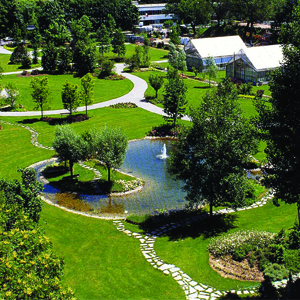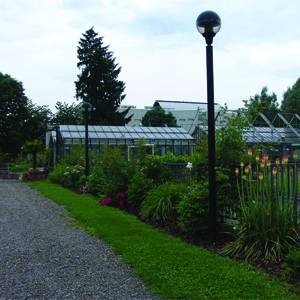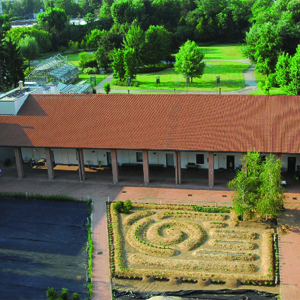
Cascina Rosa experimental educational botanical garden
This post is also available in:
 Italiano (Italian)
Italiano (Italian)
Inaugurated on September 19, 2001, this facility was born from the reclamation of 2.631 square yards of land belonging to an abandoned farmhouse. The Municipality of Milan donated the land, inside an area of about 5.5 acres.
The garden is structured according to educational and scientific itineraries, including three impressive greenhouses: one is a winter shelter for plants, while the other two are used for cultivation and experiments. There is also an experimental field and several themed flower beds.
The plants cultivated here are mainly indigenous, alternated with more ornamental species.
A special building houses laboratories dedicated to research and teaching. Rest areas, meadows, and walkways for differently-abled visitors, while several activities and events for the public are regularly organized.
BOTANICAL COLLECTION
The garden, organized on different paths (across lawn areas bordered with different plants), includes many tree species of Lombardy, and also a series of essences imported from the XVIII century onwards. There are rhododendrons, camellias, firs, oaks, willows, succulent plants, Bromeliaceae and dye species, as well as spontaneous and cultivated varieties such as willows, and Japanese hazels (Corylus sieboldiana).
A small stream and a body of water are home to spontaneous and ornamental aquatic plants, some of which quite rare.
There are scientific research projects on Biodiversity and Phylogeny currently going on at this very facility. Guided tours or themed seminars for schools are available.
The collection of aquatic and marsh plants is certainly a true forte of this Garden. After all, its small lake and the stream provide the natural habitat. The most peculiar plants are found in underground pools where two or more species can grow at the same time.
The collection is currently made of around 40 species, some of which are very rare in Italy. Nymphaea alba, Hottonia palustris, Hippuris vulgaris, Nymphoides peltata, and Plantago uniflora.
In addition to the previous collection, we shouldn’t forget carnivorous plants, some of which rare and belonging to our flora (both aquatic and terrestrial). This collection includes a good number of species from mild climates, provided with some protection from hail.
Some carnivorous plants are found in the pools along with the marsh species. Much rarer species like Utricularia vulgaris, Utricularia stygia, and Pinguicola grandiflora are preserved here, as they are subject to ex-situ conservation.
At the moment, this collection features almost 50 species with all the different types of trap and prey-catching system. They belong to the major families of nepenthacee, sarraceniacee, droseracee, and lentibulariacee.
This post is also available in:
 Italiano (Italian)
Italiano (Italian)
Contatti
Via Valvassori Peroni 7 - Milano(MI)
02 50312886
orto.didattica@unimi.it
http://www.reteortibotanicilombardia.it
Altre info
Gratuito. Non sono presenti barriere architettoniche
Da marzo a giugno: martedì e mercoledì dalle 10.00 alle 12.30 e dalle 14.30 alle 17.30, venerdì solo mattina. A settembre e ad ottobre: martedì e mercoledì dalle 10.30 alle 12.30 e dalle 14.30 alle 17.30, venerdì solo mattina. Escluso i giorni di chiusura dell’ateneo. Apertura straordinaria durante il Solstizio di Estate.


